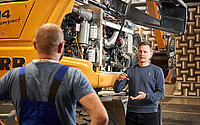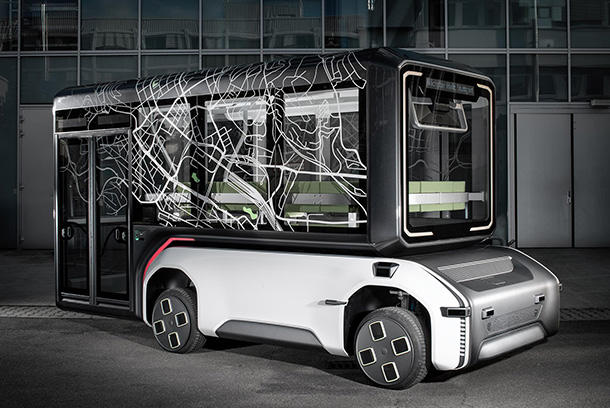- Energy
- Climate, Environment & Health
- Mobility
A STEP UP

According to fuel consumption studies, agricultural and construction machinery accounts for around eight to nine percent of CO2 emissions from diesel-powered vehicles within the EU. "That seems like a small range at first glance, but over its entire lifetime, an excavator consumes significantly more fuel than a passenger car. If you can save a few percent there, that's huge," says Niklas Bargen, an academic staff member at the Institute of Vehicle Systems Technology (FAST), Mobile Machinery Division.
The first approaches to hybridization and electrification of construction machinery have been around for several years. In order to substantiate the growing importance of such concepts, KIT researchers and industrial partner stoba e-Systems GmbH have investigated the effectiveness of various known hybridization measures using the example of a hydraulic excavator. The project, which was funded by the Baden-Württemberg Ministry of Economics, Labor, and Tourism, ran for 12 months. With the aim of recording all everyday movements as well as the power flow of the excavator, the researchers equipped a test excavator with extensive measurement technology. In around 100 days of operation on three different construction sites, they then automatically collected all the necessary measurement data during typical operations. In parallel, the research team researched suitable hybridization measures for excavators and built a computer-based model of a conventional excavator. "We use the data collected on the construction sites in our model to represent the movements and power flows of a real excavator as accurately as possible. We can then implement a predefined selection of hybridization concepts in the model, simulate the electrical components and thus determine the savings potential of each concept," says Bargen, explaining the individual project steps. The results relate to the 90-degree loading cycle, which is considered the most important activity of an excavator, and are promising: "One of the concepts shows an efficiency increase of 12.5 percent as well as fuel savings of 9.3 percent. We have even calculated a potential efficiency increase of around 20 percent," reports Bargen.
With an increasingly critical eye on global CO2 emissions and the resulting tighter regulations, the results are likely to be interesting not only ecologically but also economically. "Legislation is likely to push construction companies to electrify their fleets to a greater or lesser extent for the purpose of reducing their C02 emissions. Our results reinforce the importance of hybridization as a bridging technology on the way to full electrification of construction equipment. They can also provide an important basis for construction companies to make the right purchasing decision for new construction machinery in the future," explains Bargen, looking ahead to the construction sites of tomorrow.
Images: Amadeus Bramsiepe / KIT




